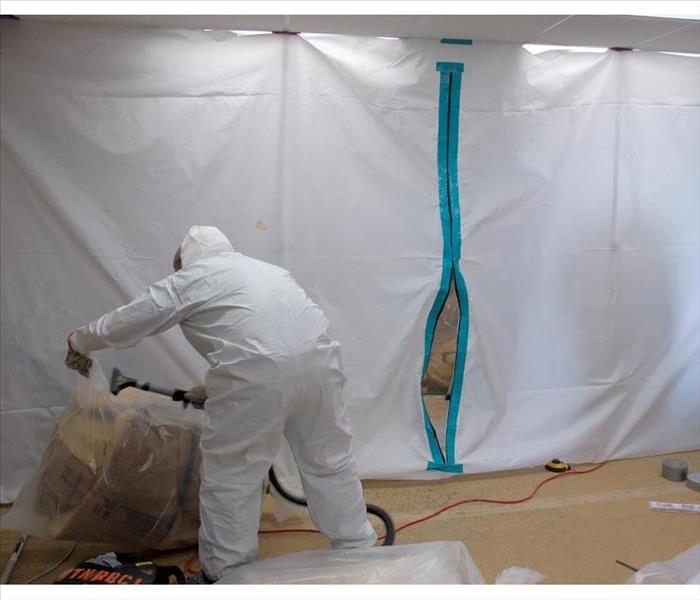How To Treat Mold Damage After a Flood
5/1/2022 (Permalink)
How To Treat Mold Damage Following A Flood
If your business in Whittier, CA, has been caught in a flood, it's important to quickly check for mold growth. You don't want standing water to linger and cause further damage to your flooring or any other part of your structure. Mold can grow and spread in as quickly as 24 to 48 hours, so it is key to act as soon as possible before further problems occur.
Examine the Area Damaged
Look closely at the area of your floor that flooded. This might be the whole floor, a certain area, or just one level, such as a basement within your business. Once you have an idea of what areas need to be looked at, seek help from professional emergency restoration services rather than attempting to tackle the problem on your own.
Understand Different Treatments Used
There are a variety of treatments that can be used to prevent the spread of bacteria depending on the type of mold growth that has developed. These can include:
- Abrasive cleaning
- Foam cleaning
- Immersion cleaning
- Wet cleaning
If there is growth that is difficult to remove, abrasive cleaning might be the best method. Foam is typically used for treating upholstery, while wet cleaning is helpful for heavy residue left behind. Your floor might need one or more of these methods.
Get the Area Treated Quickly
Once you suspect mold damage has happened as the result of a flood, it's necessary to get it taken care of as soon as possible. The restoration company can help you understand where you need to have work performed and what the extent of your damage is. You can determine if you'll need to temporarily close your business. Even if you do, you can feel confident knowing the damage has been treated.
While mold growth can occur quickly, you can mitigate the damage by getting it cleaned up as soon as possible. With proper treatment, you can ensure it does not cause further problems.






 24/7 Emergency Service
24/7 Emergency Service
